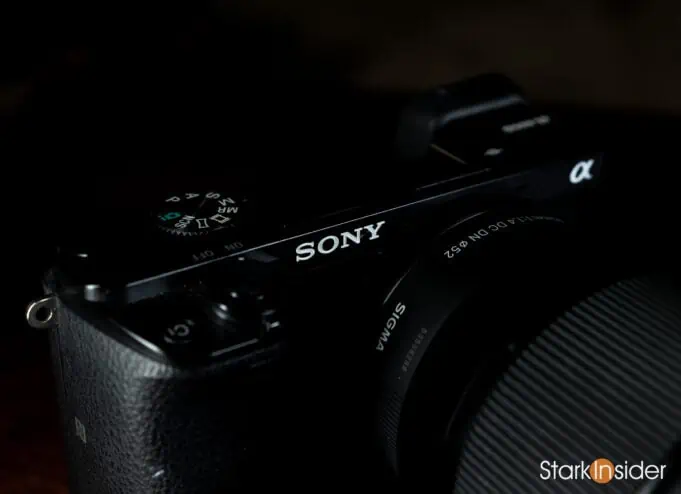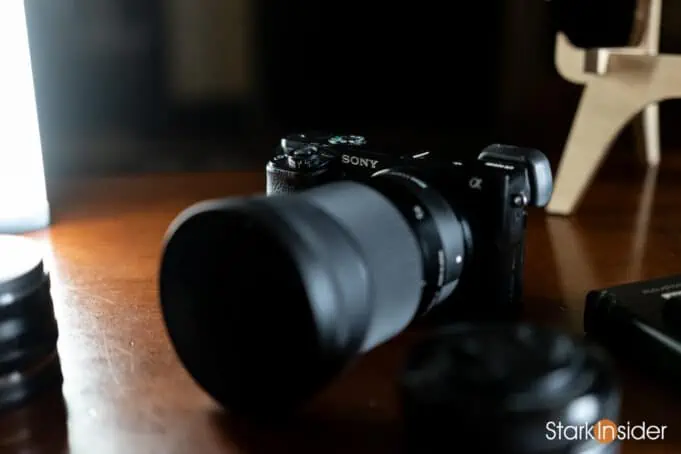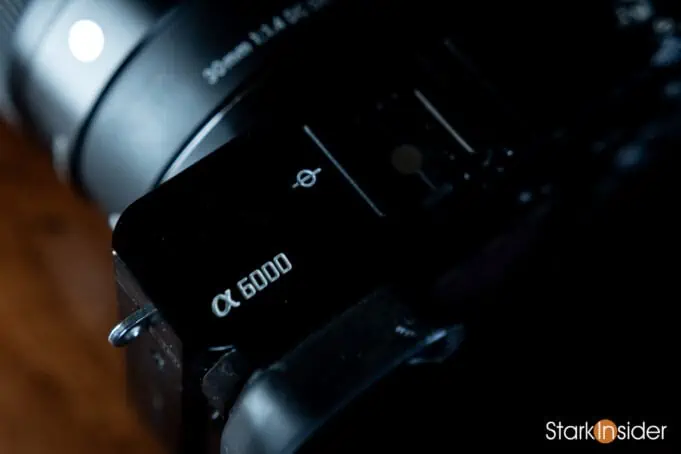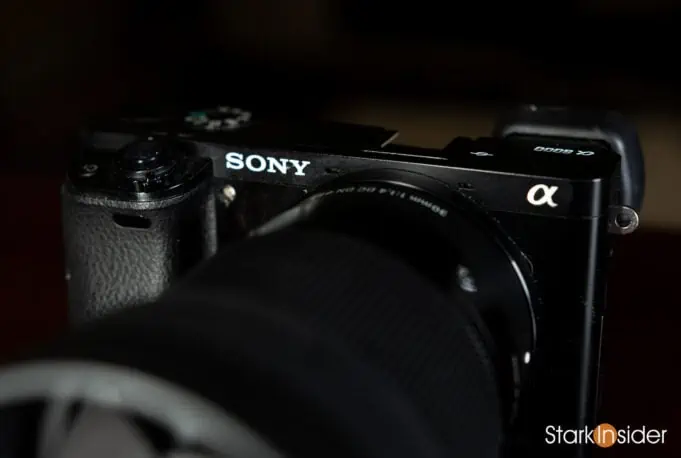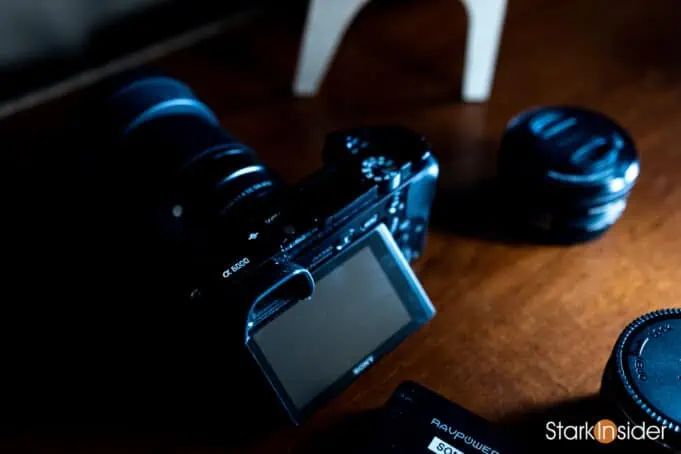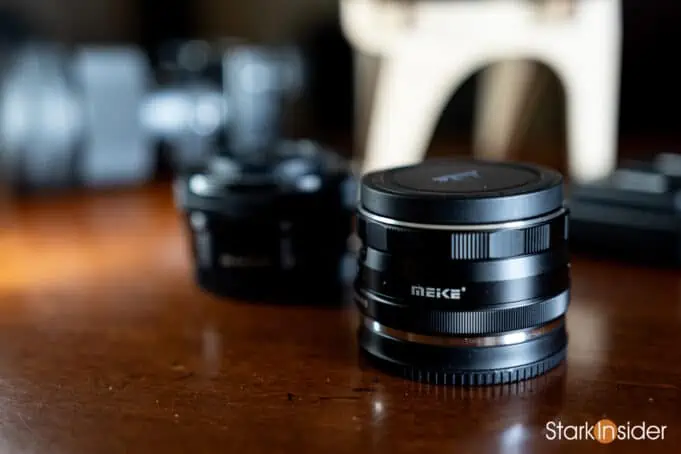Should you buy the landmark mirrorless camera that is the Sony a6000? (Spoiler alert: yes!)
For a basic rangefinder style 24MP camera that came out in 2014, surely the a6000 should not be on your shopping list? Right?!
Well, maybe not so fast.
As I recently discovered, though it’s nearly 10 years old (might as well be a century by today’s standards) the a6000 packs a punch that belies both its size and price. Should you be looking for a slick and capable camera that slips easily into a travel bag this iconic Sony model could still be a good choice.
That’s what I decided, at least.
With an upcoming trip to London, Loni Stark and I wanted something more artistically appealing than the hyper-saturated and overly-processed look produced by today’s iPhone cameras. Sure, no doubt, iPhones and Androids can be great for social media and getting attention. But there’s something decidedly detached looking and feeling about the results. Too much AI? Computational photography? Heavy-handed, crowd pleasing stuff?
Instead, I decided to dig deep into my camera bag and storage closet.
If I were shooting video it would be an easy decision: Panasonic GH5 or GH6 for travel and compact work; and the superlative RED Dragon for studio work.
But this was all about photography.
Enjoying the sights of London — and I guess with a little a bit of dreamy romanticism sashaying around town clicking away old school style and capturing the lights and charms and moments. Last Night in Soho!
All captured onto an SD card… no less. Sans cloud, and without the computational processing we were trying to avoid.
The logical choice might be the heavyweight Canon EOS R5. We use that flagship, full-frame camera to take 45MP archival stills of Loni’s artwork and also for product photography here on Stark Insider. Breathtakingly good that camera. Beautiful and accurate color (blows away the iPhone in that regard). Just magnificent stuff.
However, on the down side, despite being a mirrorless camera, the R5 is still relatively bulky when it comes to travel and attempting to minimize weight. It’s also very expensive. We would constantly be thinking about the R5. Where is it? Did we lose it? Is someone lurking nearby ready to snag it from our hands? Etc.
Sony Alpha a6000
APS-C Interchangeable-Lens (ILE) Camera
Key Specs & Features
- 24.2MP APS-C Exmor CMOS Sensor
- BIONZ X Image Processor
- UHD 4K30p Video with HLG & S-Log3 Gammas
- XGA Tru-Finder 2.36m-Dot OLED EVF
- 3.0″ 921.6k-Dot 180° Tilting Touchscreen
- 5-Axis SteadyShot INSIDE Stabilization
- Up to 11-fps Shooting, ISO 100-32000
- 4D FOCUS with 425 Phase-Detect Points
- Real Time Eye AF for Stills and Video
- Wi-Fi, NFC, Bluetooth 4.1
- Lens mount: Sony E-mount
- Media: Single SD card slot
- Dimensions (W x H x D): 4.7 x 2.6 x 2.7″ // 120 x 66.9 x 69.3 mm
- Weight: 17.7 oz / 503 g (With Battery, Recording Media) // 14.7 oz / 418 g (Body Only)
- Release Year: 2014
- Original MSRP: $549 USD
- Availability/Buy: Try Amazon or eBay
Then I (inevitably) stumbled upon the long lost Sony Alpha a6000. Heaped amongst a small, somewhat disorderly pile of kit destined for eBay, its compact size and appealing style caught my eye — despite the need for a bit of a dusting.
Ever since cameras like the GH5 and R5 and then GH6 came along we didn’t really use the a6000 so it sat there with a kit lens, spare batteries and a (nice) Sigma lens waiting for a buyer. Luckily I never got to it, and my procrastination in this case paid dividends.
Long Live the Sony a6000
Like a kid at Christmas I charged the battery and then powered up the a6000. No issues. Everything worked as well as it had in 2014.
Snapping a couple of quick shots I was reminded how satisfying the shutter action is on this thing. Excellent. It’s also very fast. Focus seemed better than I remembered as well.
Then there’s the ergonomics. Not bad. I’m used to traditional DSLR and larger mirrorless designs so the rangefinder layout is a bit different for me. Still, it didn’t take long to get up to speed. Part of that has to do with Sony providing just enough stuff to get the job done. For instance, there’s only two dedicated custom buttons (though you can customize a few non-dedicated ones as well). And on the top plate there’s only one dial instead of the now universally standard two.
What I learned is that with the a6000 you’re not overwhelmed. There’s enough here to tweak the settings to your liking, but not so much that you’d need to spend days and weeks on end digging through menus. Those new to photography will, of course, need to spend the requisite amount of time learning about the exposure triangle, and the various shooting and focus modes. But that would be the case with any camera for a newbie. Anyone else who has spent time with a modern digital camera will find things familiar and comfortable.
We bought the a6000 way back when for $549 USD. That included the kit lens — the one that is widely scorned. Over the years I added a Sigma 30mm prime that does well in low light, and produces quality far beyond its price point.
Before we headed to London I decided to have some inexpensive fun and buy a fully manual lens. In this case a 25mm E-mount made by Meike (see above photo). Never heard of them before. The price was right, at only $75 USD! And the focus and aperture rings reminded me of vintage Canon lenses in the best way possible.
Playing around in advance of our trip to the UK I couldn’t help but grin ear to ear when switching the a6000 to manual mode (M) and twisting the rings to compose at will — all with absolutely no digital intervention. Thankfully, there’s a setting in the a6000 menu that allows you to shoot without a lens attached (“Release w/o Lens”) or at least when the camera thinks there’s no lens attached.
After re-acquainting myself with this old Sony I realized something: this is the form factor that was once the domain of Micro Four Thirds (MFT). Small body. Small lenses. Small batteries. Absolutely ideal for lightweight travel, without compromising on quality. Plus, if you shop carefully you can get a nice setup for a reasonable sum.
In any case I know the proof is in the pudding. Ultimately the photos we take in London will be the final and most important test.
Yes, I realize updated models like the Sony a6500, a6600 and a6700 have newer features (touchscreens) and faster processors. But I don’t need 4K video. I really don’t need anything more that the a6000 already provides. Besides, I already own one! And, most importantly, this trip is all about the joy of street photography, not a fruitless debate about tech specs.
For those considering a crop APS-C camera without breaking the bank, one that has a massive lens catalog and one that can easily tuck into a travel bag, I’d whole heartedly recommend you check out the Sony a6000. A milestone camera if there ever was one.

